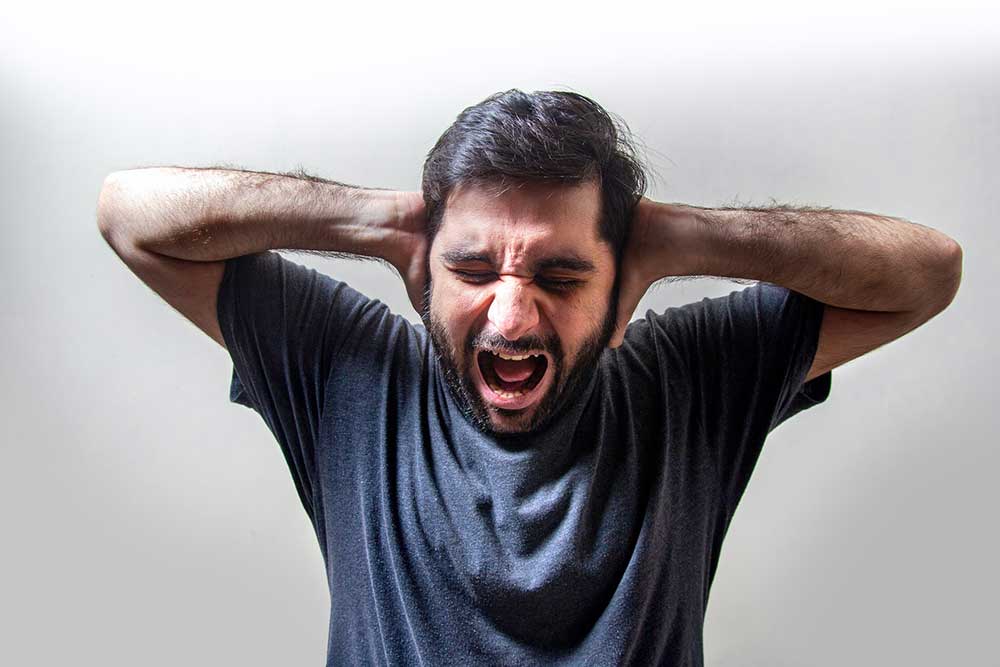Parents are never spared from worries when it comes to their children’s health. No parent wants to see their child ill but owing to the changes and stressors of daily life. Some medical disorders are likely to affect their children. Just like adults, young people can also get migraines.
Acute recurrent headaches, known as migraines, affect 3% of preschoolers, 4% to 11% of elementary-aged kids, and 8% to 15% of high school teenagers. Boys are more likely than females to experience migraines in early childhood and before puberty. Migraine is more common in teenage girls than teenage boys. The reason for this can be a change in estrogen levels.
A migraine is a neurological illness that frequently cripples sufferers and results in mild to severe localized headaches. These headaches may also be accompanied by other symptoms like exhaustion, nausea, vomiting, or visual or hearing abnormalities. It’s a headache that can range from moderate to severe, lasts 2 to 48 hours, and often happens 2 to 4 times each month.
Every age group is susceptible to migraines, but a teen’s schoolwork, job, and social life can all be adversely impacted by debilitating migraines.
It’s typical for migraines to start throughout adolescence. Every time there are a lot of changes, a migraine episode can start. People must understand that children and teenagers can get migraines. It’s one of the more prevalent medical issues affecting kids.
Described here are the various types of migraine that can strike teenagers, as well as what to do when your kid suffers from it. It also offers guidance on when teenagers should visit a doctor and suggestions for preventing future migraine attacks.
There are primarily two kinds of migraines. It is estimated that 60% to 85% of children and adolescents who experience migraines have a migraine without an aura, often known as a common migraine. Another 15% to 30% of people will experience a classic migraine, which has an aura.
Migraines frequently start in the late afternoon in young children. As the youngster ages, migraines would now frequently start in the morning. It might be challenging to decide where to begin because there are numerous strategies to incorporate self-care into your child’s migraine management strategy.
5 Things To Do When Your Teen Has Migraine
There is a lot of stigmas associated with migraine in teenagers. People assume they are faking it, but for certain kids and teenagers, it may be a crippling issue that affects their school performance, attendance, family and social interactions, and quality of life in general.
Here’s what parents should do if their teens have migraines:
1) Seek professional help.
Teens, along with their parents, should see a doctor if they have severe or regular headaches. Any teen with a migraine-prone parent should consult their doctor as soon as they begin to experience such or the same symptoms.
Consult a doctor about possible therapies, which may include medications and lifestyle modifications. A follow-up is needed if such measures are not reducing migraine attacks or symptoms.
2) Routine adjustments.
To help patients prevent future migraine attacks, doctors frequently advise making specific adjustments to their regular routine. Changes include:
- avoiding processed foods, particularly those that are high in sugar and fat
- enhancing the regularity and quality of sleep
- maintaining a headache journal to aid sufferers in identifying potential migraine triggers
3) Medications and treatments.
Pain management – OTC painkillers, such as acetaminophen or nonsteroidal anti-inflammatory medications (NSAIDs), can help with acute migraine pain. A doctor may recommend prescription-strength therapies if these are ineffective.
Nausea relief – Antiemetic medications may be prescribed by a doctor to help treat nausea and vomiting symptoms. Prochlorperazine and Domperidone are two examples.
However, extreme care should be exercised, and an expert should be consulted when taking medications as these depend on your child’s age and other factors.
4) Find ways to reduce stress.
Every migraine management plan includes stress reduction for a reason. Working on stress reduction helps reduce the frequency, severity, and duration of attacks because stressors can cause migraines. The plan may include yoga, counseling, and exercise.
Although a self-care regimen won’t materialize overnight, small efforts in self-care can help you become more accepting of who you are, increase your activity, and lower your stress levels. As a result, these can all assist you better in controlling your migraine attacks.
5) Talk to your child.
No two children’s migraine triggers and symptoms are the same. Hence, your child needs to be aware of what their treatment plan entails. They must learn to control their triggers and be proactive in their treatment.
You can also discuss with your adolescent the drawbacks of overscheduling, which increases stress and interferes with sleep. Maintaining a normal sleep pattern, exercising frequently, and eating regularly—including breakfast—can all aid in preventing migraine headaches.
A migraine management strategy often combines a symptomatic and preventive approach. Having a variety of tricks and skills does help as you learn the early signs of an attack and prevent it from getting worse.
Consult a specialist as soon as you suspect your child may suffer migraines to prevent them from ruining their everyday routine. Migraine clinical trials are the best source of information and an excellent place to look into different choices. Find the one that is closest to you.
